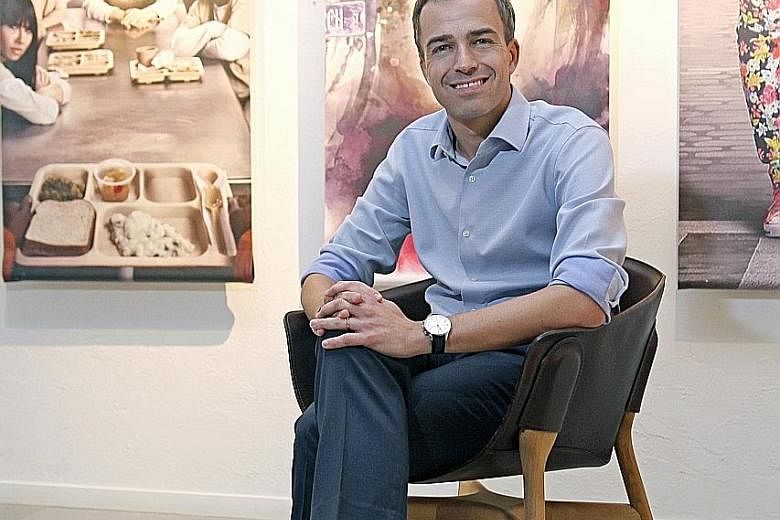Sleepless nights in Singapore may be thanks in part to binge watching television shows online.
Singaporeans devour a TV series in an average of three days, a day faster than the global average, with the peak watching hour at 10pm.
This is among the insights that video-streaming service Netflix has gleaned from its local subscribers since it launched in the Republic last January, offering its catalogue of movies and shows for a flat monthly fee of $10.98.
Netflix's vice-president for business development in Asia, Mr Anthony Zameczkowski, said that streaming has disrupted the world of network and cable TV by allowing viewers to watch what they want, when they want, across multiple platforms.
"Linear TV is a more passive experience - you can switch a channel but can't really pick what content to watch," he said. Linear TV refers to traditional TV shows broadcast in real time according to fixed schedules.
The American company does not release its Singapore subscriber numbers or catalogue size, but said that it has doubled the titles available here over the last year to be in the thousands.
Both StarHub and Singtel took a hit to their pay-TV subscriber base last year, as the results of a survey released by the Media Development Authority showed that younger viewers spent a greater proportion of their viewing time online than on traditional TV.
Netflix started as a DVD rental service in the United States in 1997, and has since transformed into a dominant player in the over-the-top (OTT) content space, which refers to on-demand content that is delivered over the Internet.
In the decade since it launched its streaming service, Netflix has grown to over 100 million subscribers in more than 190 countries, half of whom come from outside the US.
Traditional television is not the only space that Netflix and other OTT providers such as Amazon Prime Video and HBO Go have disrupted - video rental stores have all but vanished in recent years with the rise in popularity of such services.
Netflix's foray into original programming in 2013 also helped to popularise binge watching, with the release of entire seasons of shows, such as House Of Cards and Orange Is The New Black, at one go.
"There is no notion of prime-time TV anymore," said Mr Zameczkowski, 39, at Netflix's regional headquarters at Marina Bay Financial Centre.
Netflix's upcoming original film Okja caused a stir earlier this month when South Korean cinema chains threatened to boycott the film, as a planned same-day release online and on the big screen on June 28 would damage the "distribution order" in the film industry, they said.
But such moves are ultimately a boon to consumers and content producers, said Mr Zameczkowski. "People want to get access to the same content all around the world at the same time," he said.
Producers also have more creative freedom, as stories for original TV series, for example, can be crafted without needing to adhere to episode lengths or advertising needs.
Netflix will spend US$6 billion (S$8.3 billion) this year on licensed content as well as 1,000 hours of original programming, including new seasons of shows like Stranger Things and more content produced in Asia. "We're hoping to make shows more locally relevant but also have global appeal," Mr Zameczkowski said, as the content can reach a wider audience through its personalised recommendations.
It also plans to spend US$1 billion on technology this year, part of which will go towards improving video compression to allow subscribers to watch more hours on less data. Data efficiency is particularly important for subscribers in Asia, where mobile usage is high and a new function to download selected content for offline viewing has proved most popular.
As for content competitors, Mr Zameczkowski said that there is room for users to subscribe to different OTT content providers.
"We all produce our own content that is exclusive to the platform and subscriptions aren't expensive, so it's not a case of either-or," he said.
A bigger challenge is piracy websites, where viewers can illegally stream content for free.
"That's a big threat to the industry, and we believe our role is to make piracy irrelevant by making the best content available at an affordable price."


